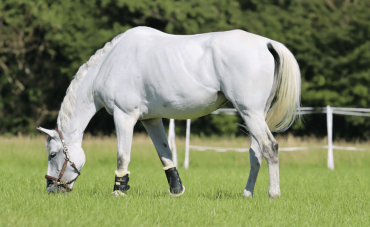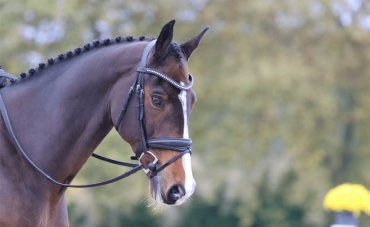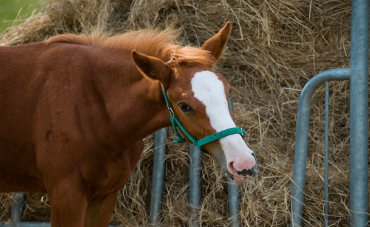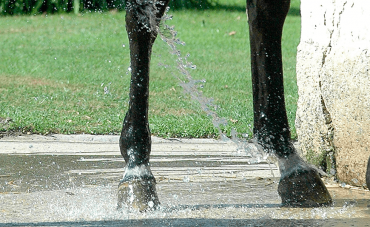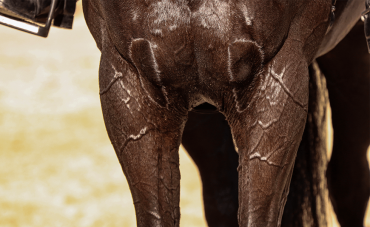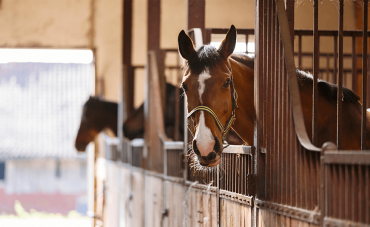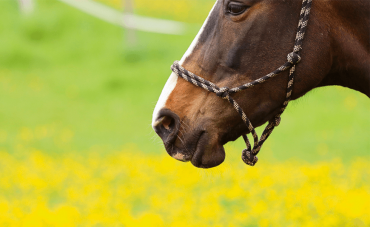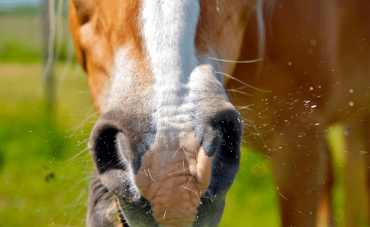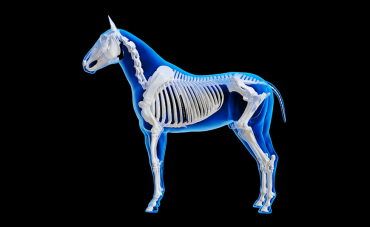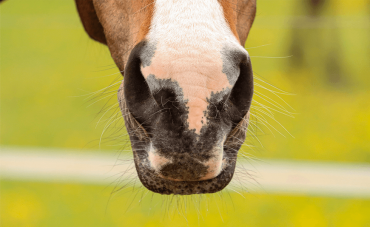Hoof abscess is one of the most common causes of lameness in horses. It is a painful condition, but if it is detected and treated in time, it can be cured rapidly and avoid the horse to suffer from any after-effects. Today we suggest to take a close look at this common condition.
What is a horse foot abscess?
The horse's hoof abscess corresponds to a local inflammation within the hoof due to a bacterial infection.
The abscess is located deeply in the hoof so it is not always visible to the naked eye.
The abscess itself is usually a pocket of tissue enclosing a greater or lesser amount of pus (depending on its size). It is this pocket that will cause an overpressure within the horse's hoof, which usually leading to severe pain. The pain, and therefore the lameness, will be all the greater as the pocket will be large.
Generally, after a few days, the abscess goes down and ends up bursting (often at the sole level), which leads to a decrease in pain. It may also break through upwards at the crown, which will be more difficult to treat.
As for all problems leading to a locomotion impairment, a quick response with an adapted treatment is important to avoid complications and possible after-effects. While most abscesses are not very complicated to cure, it may occur that deeper structures of the hoof are affected which may complicate the treatment.
What causes foot abscesses in horses?
Horse foot abscesses can have a variety of causes. However, there are 4 main causes that can be found in many cases:
Abscesses related to the horse's environment
This form of hoof abscess is quite common in horses living in the open, especially when the ground is very wet and muddy (winter).
The almost permanent humidity of the ground will cause the horn to become more permeable. Bacteria responsible of hoof abscesses, can then enter the hoof more easily (often in the area of the white line).
Trauma-related abscesses
Trauma may result from a shock to the sole caused by a stone or a sharper object like a nail. The impact of the object can lead to a crack in the sole or even a small area of bruising that will encourage the entry and development of bacteria.
Abscesses related to poor shoeing
A poorly fitted shoe or one that is unsuitable for the horse can cause an abscess. For example, if a nail is stapled a little too high on the horse's horn, close to the flesh, it can cause local inflammation that can then lead to an abscess.
Hoof abscesses related to specific condition
Some horses may have recurrent hoof abscesses due to a more general problem. For example, horses with Cushing's syndrome are more susceptible to infections such as hoof abscesses. The hoof abscess will need to be treated but the general condition will also need to be treated to prevent future recurrences.
How do you recognize an abscess?
There are some fairly classic symptoms for hoof abscesses:
Severe lameness
This is one of the most common signs. While usually the lameness is very severe and appears suddenly, sometimes the lameness is discrete at first and gets progressively worse.
The intensity of the lameness will also depend on the horse's resistance to the pain. Thus, some horses will limp very slightly when walking, while others will not want to put their hoof on the ground.
Strong digitate pulse
The digitate pulse is a sign of inflammation in the foot. It is a fairly easy indicator to check since it is not present in normal circumstances. To take it, put your index and middle fingers on the top of the pastern (inside or outside) until you feel pulsations.
Hot and sore hoof
Heat and pain are characteristic signs of inflammation. Without proper equipment, it can be difficult to determine exactly where the pain is originating from.
Swollen limb
Another sign of inflammation, swelling of the limb may be observable. Usually, it will be localized at the fetlock, but the swelling may extend up to the cannon.
As the horse's foot abscess corresponds to an inflammation, the horse may also present signs such as hyperthermia, a slight decrease in appetite or even dejection.
How is a hoof abscess diagnosed?
If your horse shows one or more of the above symptoms, we recommend that you contact your veterinarian.
Indeed, some of the symptoms mentioned can be linked to other hoof problems such as a fracture.
To diagnose a hoof abscess, your veterinarian will most likely perform a clamp test. To do this, he will use a pair of probing forceps and will apply pressure upon the hoof (sole, fork...) and observe the horse's reaction.
A healthy horse will have no reaction. On the contrary, if the horse does have a hoof abscess, when the veterinarian will apply pressure to the abscess, the horse will react.
In addition to this examination, your veterinarian may decide to perform an X-ray of the hoof. This examination can provide additional information about the depth of the abscess (sometimes visible) and will also help to exclude possible fractures of the hoof bones.
What is the treatment for a horse's hoof abscess?
Once your veterinarian has confirmed the abscess, he or she will be able to suggest a treatment that is appropriate to your horse and to the condition of the abscess.
Your veterinarian (or trimmer/blacksmith) can lightly dig into the area of the abscess as determined by forceps. If the abscess is "ripe", it will be possible to find the pus-filled abscess pocket and open it to drain the abscess.
If the abscess is not "ripe", the goal will be to ripen it. To do this, your veterinarian will probably recommend treatments to soften the hoof’s wall. There are many "recipes" to mature abscesses (flaxseed, homemade remedies...). They all work on the principle of a bandage to be changed every day until the abscess breaks through.
It will often be easy for you to know that the abscess has broken through, first, the bandage will probably have a very unpleasant smell and your horse will rapidly feel much better standing on his hoof.
Whether the hoof abscess was burst by the blacksmith or as a result of the bandages, the hoof will need to be carefully cleaned daily.
Generally, your veterinarian will recommend bleached foot baths. Bleach is a good disinfectant that will clean up the horn and avoid an infection linked to the "hole" left in the foot.
Once the hoof is clean, it is best to put on a new bandage to keep the hoof as dry and clean as possible during the day.
Except in a few very special cases, the veterinarian will not prescribe anti-inflammatory drugs because they can delay the maturation of the abscess and increase the risk of infection.
How can I prevent a horse's hoof abscess?
The best way to prevent abscesses is to maintain your horse's hooves as clean as possible.
- Have your horse groomed or farrier regularly. In addition to taking care of the hoof, they can correct some of the hoof defaults that can affect your horse's locomotion.
- Clean your horse's hooves regularly to prevent stones from damaging the horn. This also allows you to see the condition of your horse's wall and to apply grease or oil to keep it more supple.
- Avoid pulling off your horse’s shoes during very wet seasons. Indeed, it can cause "holes" of the nails in the horn to be infected because they become an easy entry point for bacteria, especially in a humid environment.
- Support your horse's hooves with nutritional supplements. Biotin and other nutritional elements such as zinc or methionine can help support horn growth and improve its strength.

